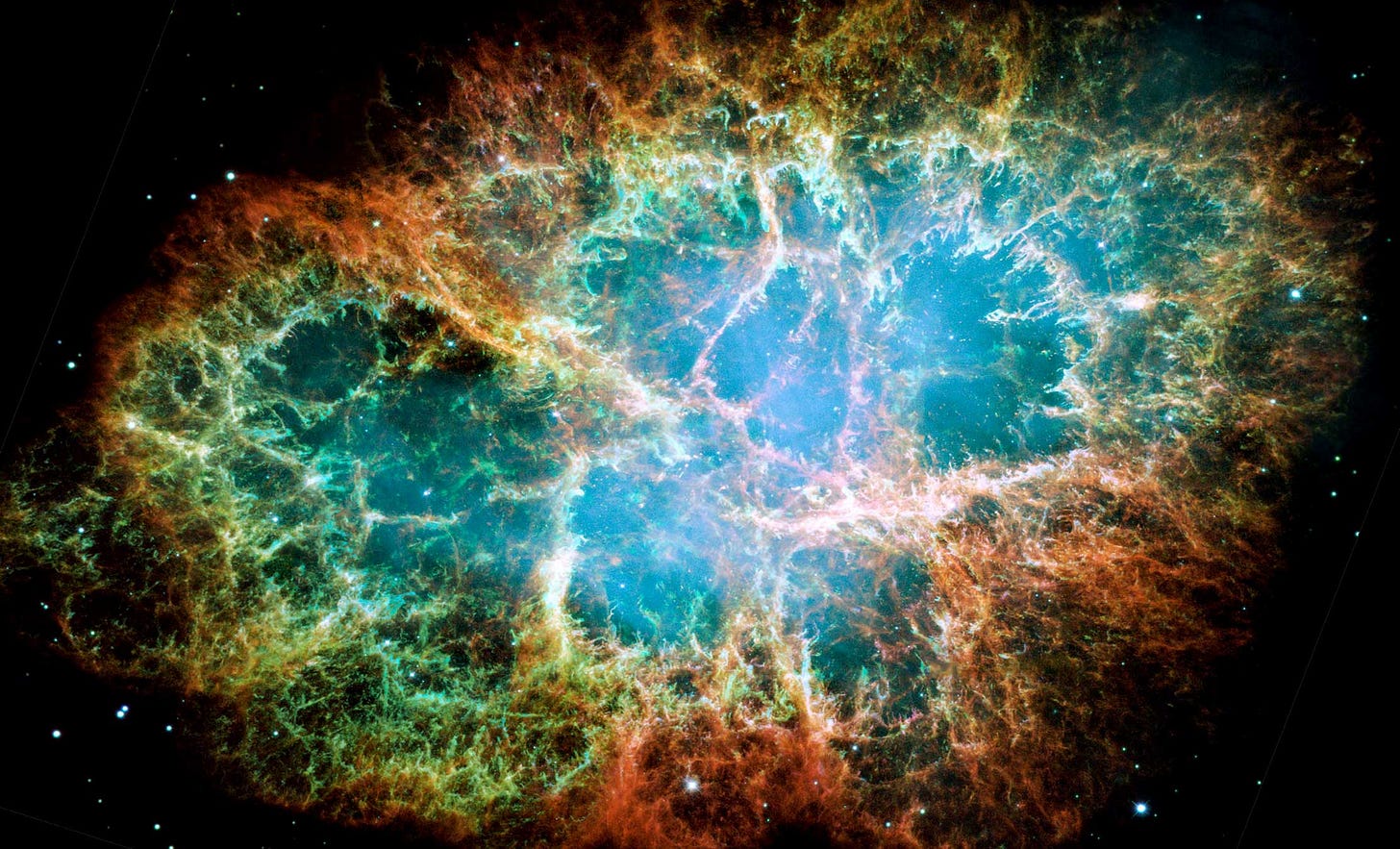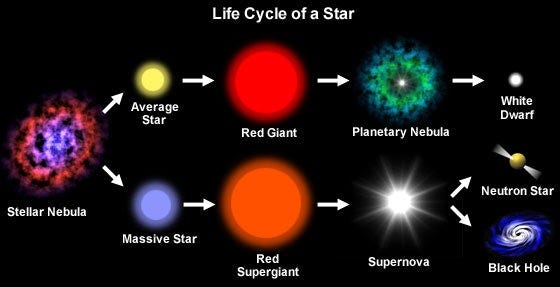Greetings, fellow scientist.
When we say we do science, it means that we are curious, that we pose questions and we are ready to investigate. As our beloved scientist Stephen Hawking used to say, “Remember to look up at the stars and not down at your feet.” But have you ever wondered where the Stars came from? Were the stars, like our own Sun, always been around? What did Herschel meant when he said that, “Stars are the landmarks of the universe.”?
To know the answers to such questions, let us take a look at the life cycle of the stars.
Birth of a Star

Once upon a time, some scientists took starlight, ran it through a prism, looked at the rainbow coming from the starlight, and said: “Hydrogen!” The most remarkable discovery in all of astronomy is that the stars are made of atoms of the same kind as those on the earth.
A star is formed by the collapse of a large amount of interstellar gas(mostly hydrogen) and dust due to its gravitational attraction. Such giant regions of gas and dust are called nebulae.
The collapse results in the atoms of gas colliding with each other more frequently with greater energies that heat the gas. Eventually, the gas becomes too hot that individual molecules of hydrogen no longer bounce off on colliding, but rather combine to form helium. This reaction results in the release of a gamma-ray photon which reaches us in the form of light. This is what makes a star shine.
The heat released also increases the pressure of gas acting outwards which finally balances the gravitational attraction. Although gravity is by far the weakest force of nature, its powerful action serves to determine the ultimate fate not only of individual astronomical objects like stars but of the entire cosmos. The gas stops to collapse and equilibrium is attained between the two forces. A star is born.
The Luminous Lifetime
The star has turned on. It will remain in this position for a very long time and will continue to shine for millions of years. The nuclear fusion in the core of the star producing helium from hydrogen can create even heavier atoms. Helium atoms combine to form carbon, which combines to form oxygen and in massive stars even neon, magnesium, silicon, sulphur all the way to iron.
Do you know the carbon, nitrogen, and oxygen that makeup ninety-nine per cent of our living substance were cooked in the deep interiors of earlier generations of dying stars?
The Dark Fate

Eventually, the star runs out of fuel, the equilibrium is broken and the gravitational collapse begins again. A star now reaches the final stages of its life. Paradoxically, the more fuel a star starts with, the sooner it runs out of it1. The ultimate fate of the star depends largely upon its initial mass i.e the mass at its birth. A star may die in several ways:
Stars with a mass similar to our sun will slowly blow away their mass in space, expand and cool to become a red giant. The density will increase considerably (about a ton per teaspoon) and they would become a white dwarf and finally a black dwarf.
Fun fact: There is sufficient energy in the Sun to maintain its output of heat for 15 billion years
Others with a mass twice that of the sun will exhaust their fuel faster, and under enormous pressure, electrons and protons will combine to form a single heavy nucleus. The core will explode violently, in an event known as a supernova.
Supernovae eject the residual gas and most of the mass of the remaining star in space resulting in the creation of new star-forming regions which may condense again in millions of years to give birth to a new generation of stars. Supernovae also result in the birth of the most fascinating objects in the universe like neutron stars and black holes; a story to which we will return.
Such dramatic is the saga of these massive celestial objects, condensing from the gas ejected after the death of a previous generation of stars, producing the light from massive nuclear fusion in their cores for millions of years, ultimately dying in the most beautiful explosions in the universe.
Even in its death, a star gives the cosmos one of the most beautiful gifts it would ever receive and leaves an everlasting impression in the hearts of an intelligent race observing it miles away from its home planet because, as marvellous as the stars, is the mind of the person who studies them. So remember to focus your telescopes and look out for the new stars.
In the next issue, we will take a look at these interesting machines themselves, which are nothing but a time machine of the galaxy.
Happy Learning!
You May Also Like:
Making the best out of your physics career
Massive stars which contain an enormous amount of fuel have greater gravitational force, which causes the nuclear fusion to be more vigorous in order to maintain the equilibrium, hence burning fuel faster.







Very easy and great explanation 👌👌 very nyc